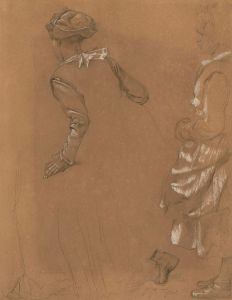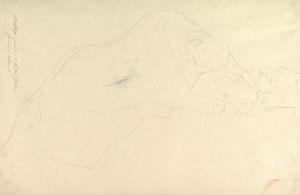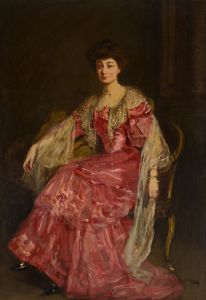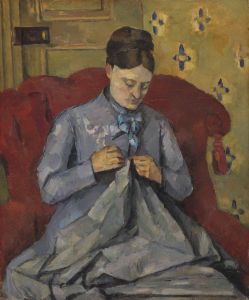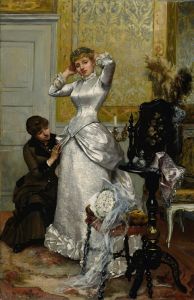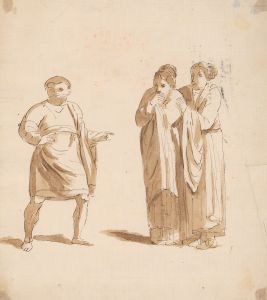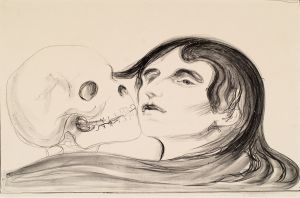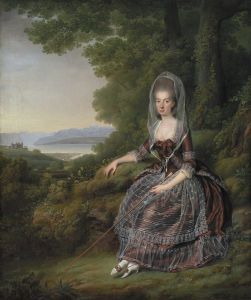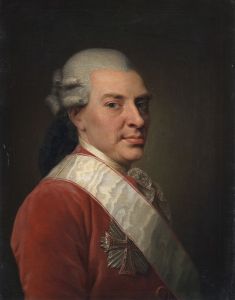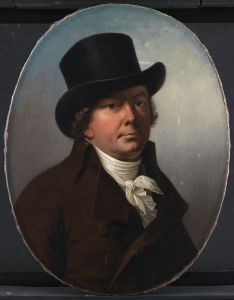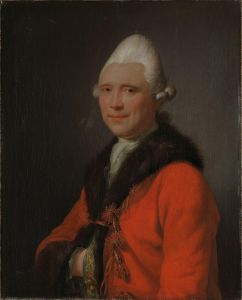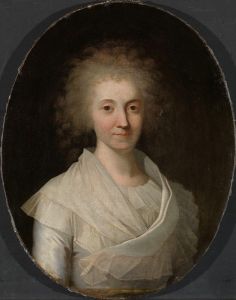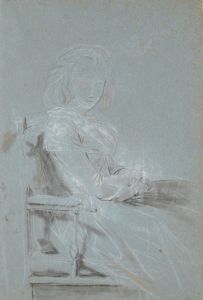
The Artist and his Wife Rosine, née Dørschel
A hand-painted replica of Jens Juel’s masterpiece The Artist and his Wife Rosine, née Dørschel, meticulously crafted by professional artists to capture the true essence of the original. Each piece is created with museum-quality canvas and rare mineral pigments, carefully painted by experienced artists with delicate brushstrokes and rich, layered colors to perfectly recreate the texture of the original artwork. Unlike machine-printed reproductions, this hand-painted version brings the painting to life, infused with the artist’s emotions and skill in every stroke. Whether for personal collection or home decoration, it instantly elevates the artistic atmosphere of any space.
Jens Juel, a prominent Danish painter of the 18th century, is renowned for his exquisite portraits that capture the essence of his subjects with remarkable clarity and sensitivity. One of his notable works is "The Artist and his Wife Rosine, née Dørschel," which exemplifies his skill in portraying intimate and personal aspects of his sitters.
Juel was born on May 12, 1745, in Balslev, Denmark, and he became one of the leading figures in Danish art during the late 18th and early 19th centuries. He studied at the Royal Danish Academy of Fine Arts in Copenhagen and later traveled extensively across Europe, including stays in Rome, Paris, and Geneva, which greatly influenced his artistic development. His exposure to various artistic styles and techniques during these travels enriched his work, allowing him to blend elements of Neoclassicism with a distinct Northern European sensibility.
"The Artist and his Wife Rosine, née Dørschel" is a testament to Juel's ability to convey the subtleties of human relationships through portraiture. The painting features Juel himself alongside his wife, Rosine Dørschel, whom he married in 1790. Rosine was the daughter of a German merchant, and their marriage marked a significant personal milestone for Juel, which he commemorated through this artwork.
In this portrait, Juel employs a delicate palette and soft lighting to create a serene and intimate atmosphere. The composition is carefully balanced, with both figures depicted in a harmonious and affectionate pose. Juel's attention to detail is evident in the rendering of their clothing and facial expressions, which convey a sense of warmth and mutual respect. The painting not only serves as a personal memento for the couple but also as an example of Juel's mastery in capturing the character and emotions of his subjects.
Juel's work is characterized by its refined elegance and the ability to convey the inner life of his sitters. His portraits often feature a subtle interplay of light and shadow, which adds depth and dimension to the figures. In "The Artist and his Wife Rosine, née Dørschel," this technique is used to great effect, highlighting the gentle expressions and the tender connection between the couple.
Throughout his career, Jens Juel received numerous accolades and held prestigious positions, including serving as the court painter to the Danish royal family. His portraits were highly sought after by the Danish aristocracy and bourgeoisie, and his legacy continues to be celebrated in Denmark and beyond. Juel's influence extended to future generations of artists, and his works remain an integral part of Danish cultural heritage.
"The Artist and his Wife Rosine, née Dørschel" is housed in the collection of the Statens Museum for Kunst (The National Gallery of Denmark) in Copenhagen, where it is appreciated by art enthusiasts and scholars alike. The painting is a significant example of Juel's contribution to the art of portraiture and his ability to capture the essence of personal relationships with grace and sensitivity.





